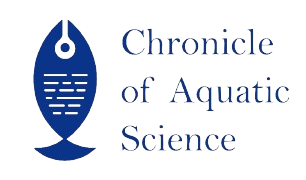| File | Action |
|---|---|
| Nanotechnology Advancements: A Catalyst For Transformative Growth In Aquaculture | Download |
- 919088951040 call us
- chronicleofaquaticscience@gmail.com Mail us
Nanotechnology Advancements: A Catalyst for Transformative Growth in Aquaculture
Popular Article
Manuscript ID: CoAS_V1IS12_01
Nanotechnology Advancements: A Catalyst for Transformative Growth in Aquaculture
Vivek Kumar, Durgesh Kumar Verma*, Narendra Kumar Maurya and Ishwar Chandra
Abstract
Aquaculture is only one of the many sectors that may be transformed by nanotechnology and has emerged as a burgeoning area of study. It can provide new approaches to fish breeding, aquatic health, fish biotechnology, and aquaculture, among other fields. Nanotechnology tools include smart medication delivery, nanomaterials, nanosensors, DNA nanovaccines, and gene delivery. Nanotechnology applications within the fish processing industry could enhance flavor intensity, elevate color vibrancy, and bolster barrier properties for enhanced safety. Additionally, they might facilitate germ detection within packaging materials. Advancements in nanotechnology promise to tackle worldwide anxieties surrounding aquaculture, such as food safety, human well-being, illness aversion, and environmental conservation. Enhancing barrier properties through nanotechnology applied in processing of fish can be employed to detect bacteria, intensify flavors, enhance the brilliance of the color, enhance packaging, and ensure stability. Examining their applicability in various fisheries sector domains will be a commendable undertaking.
Keywords
Nanotechnology, Gene delivery, Fish growth, Water treatment
References
Ashraf, M., Aklakur, M., Sharma, R. and Ahmad Sh, K.M., (2011). Nanotechnology as a novel tool in fisheries and aquaculture development: A review. Iran J Energy Environ, 2(3), pp.258-61.
Genwa, M., Kumari, K. and Singh, P., (2019). Nanotechnology: Beneficial or harmful. Nanoscience & Nanotechnology-Asia, 9(1), pp.3-3.
Haldar, C. and Nath, S., (2020). Nanotechnology: A novel technique for aquaculture and fisheries development. Int J Fauna Biol Stud, 7(6), pp.23-27.
Li H, Zhang J, Wang T, Luo W, Zhou Q and Jiang G. 2008. Elemental selenium particles at nano-size (Nano-Se) are more toxic to Medaka (Oryzias latipes) as a consequence of hyper- accumulation of selenium: a comparison with sodium selenite. Aquatic Toxicology 89: 251- 256.
Rather, M.A., Sharma, R., Aklakur, M., Ahmad, S., Kumar, N., Khan, M. and Ramya, V.L., (2011). Nanotechnology: a novel tool for aquaculture and fisheries development. A prospective mini-
review. Fisheries and Aquaculture Journal, 16(1-5), p.3.
Singh, M.K. and Dutta, M.P., Scope of Nanotechnology in Aquaculture: An Overview.
Genwa, M., Kumari, K. and Singh, P., (2019). Nanotechnology: Beneficial or harmful. Nanoscience & Nanotechnology-Asia, 9(1), pp.3-3.
Haldar, C. and Nath, S., (2020). Nanotechnology: A novel technique for aquaculture and fisheries development. Int J Fauna Biol Stud, 7(6), pp.23-27.
Li H, Zhang J, Wang T, Luo W, Zhou Q and Jiang G. 2008. Elemental selenium particles at nano-size (Nano-Se) are more toxic to Medaka (Oryzias latipes) as a consequence of hyper- accumulation of selenium: a comparison with sodium selenite. Aquatic Toxicology 89: 251- 256.
Rather, M.A., Sharma, R., Aklakur, M., Ahmad, S., Kumar, N., Khan, M. and Ramya, V.L., (2011). Nanotechnology: a novel tool for aquaculture and fisheries development. A prospective mini-
review. Fisheries and Aquaculture Journal, 16(1-5), p.3.
Singh, M.K. and Dutta, M.P., Scope of Nanotechnology in Aquaculture: An Overview.
Susitharan, V., Sindhu, C. and Susitharan, C.A., (2021). Nanotechnological approaches in aquaculture. Vigyan Varta, 2(9), pp.31-36.
Zhu X, Zhu L, Duan Z, Qi R, Li Y and Lang Y. 2008. Comparative toxicity of several metal oxide nanoparticle aqueous suspensions to Zebrafish (Danio rerio) early developmental stage. Journal of Environmental Science and health Part A 43: 278-284.
Zhu X, Zhu L, Duan Z, Qi R, Li Y and Lang Y. 2008. Comparative toxicity of several metal oxide nanoparticle aqueous suspensions to Zebrafish (Danio rerio) early developmental stage. Journal of Environmental Science and health Part A 43: 278-284.
- Published online
- 30th May, 2024
How to Cite the Article
Kumar V, Verma DK, Maurya NK and Chandra I. Nanotechnology Advancements: A Catalyst for Transformative Growth in Aquaculture. Chron Aquat Sci. 2024;1(12):1-7
Copyright
This is an open-access article distributed under the terms of the Creative Commons Attribution License (CC BY). The use, distribution or reproduction in other forums is permitted, provided the original author(s) and the copyright owner(s) are credited and that the original publication in this journal is cited, in accordance with accepted academic practice. No use, distribution or reproduction is permitted which does not comply with these terms.

Nanotechnology Advancements: A Catalyst For Transformative Growth In Aquaculture


